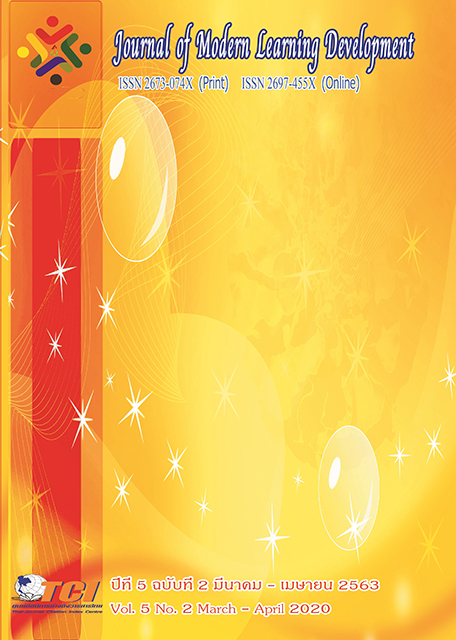The lecturers’ expectations toward future school Administration of the Demonstration School of Ramkhamhaeng University (Secondary School)
Main Article Content
Abstract
The objective of this research is to study the expectations of lecturers towards school administration of the Demonstration School of Ramkhamhaeng University (Secondary School) for create the ongoing management and improve the quality of school administration to enhance academic outcomes in each aspects of school administration. The 5 rating scale questionnaire was used as research instrument.
The researchers found that: the reliability was 0.873. The sample size in the research was 92 lecturers: 27.17 % males and 72.83% females. They have working experience as followed: 1-3 years, 4-5 years and more than 5 years which are 28.26%, 28.26% and 43.48% respectively. The findings were that the expectations of lecturers towards school administration of the Demonstration School of RamkhamhaengUnversity (Secondary School) were at high level in both overall and each aspect which were Academic Affair, Personnel Management, Student Affair, General Affaire and Building and Service Management and Community Relation.
Article Details
References
ปิ่น มาลากุล. (2518). การปฏิรูปการศึกษา : การศึกษาเพื่อชีวิตและสังคม. กรุงเทพมหานคร: ม.ป.พ.
ชไมพร กาญจนกิจสกุล. (2555). ระเบียบวิธีวิจัยทางสังคมศาสตร์. ตาก: บริษัทโพรเจ็คทื-โฟว์จำกัด.
พูน ภัทราพูนผล. (2554). การพัฒนารูปแบบการบริหารงานวิชาการในสถานศึกษาขั้นพื้นฐานเพื่อเตรียมผู้เรียนสู่ความเป็นพลเมืองโลก. กรุงเทพมหานคร: สำนักงานเลขาธิการสภาการศึกษา
Krejcie R. V., & Morgan, D. W. (1970). Determining sample size for research activities. Educational and Psychological Measurement, 30(3), 607-610.


